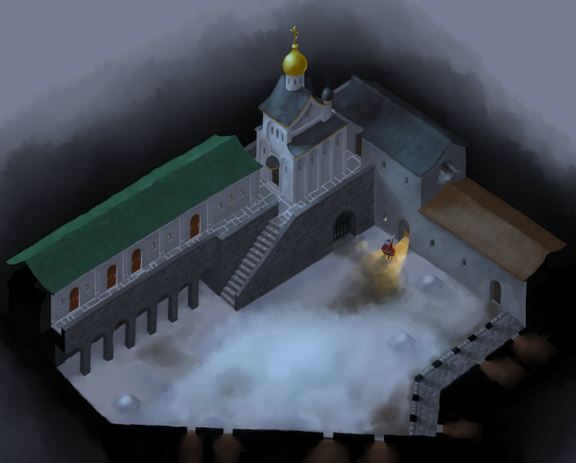Hello again! We are back from our break for awhile now and our first fortnight of the year has already ended. But before the usual round of updates on the Tsar Project I’d like to speak about a interesting article I read at Gamasutra last week. It’s about the Brazilian game industry environment and perspectives written by James Portnow. I will just say that the article was very well informed and precise, covering much of the problems that plagues our infant industry, and it’s a well worth read for everyone interested.
Now back to our update. These two weeks were used to regain our rhythm and to review certain aspects of our project. The most important update this time is that we are re-designing the game pacing, episodic/plot structure and level design to better accommodate our initial design goals. This is being accomplished through a change of approach to our development process by first structuring episodic and thematic arches to the game and building everything from there. A classic “do the Mario” approach I might add, but when something works, it works.
We pretty much finished the main revamp and the new structure is much more solid and coherent than the older one. The map was seriously redesigned. Before we used only the palace and it’s immediate surroundings. Now the area covered is much bigger but with the same scope, exploring new regions of the Moscow Kremlin that were neglected by the old level design without actually enlarging the game or making it more complex than it was.
As for the other departments, Visual Arts made a new background concept art, a wine cellar, Programming is finishing the core AI for the NPCs and Sound Design advanced with the conceptual soundscape, creating the abstract layer of the soundsteps (don’t ask).
So, yeah, we are back and warming up for the Global Game Jam 2010, which has a confirmed Jam Site in Curitiba. See you all soon.

 English
English Português
Português